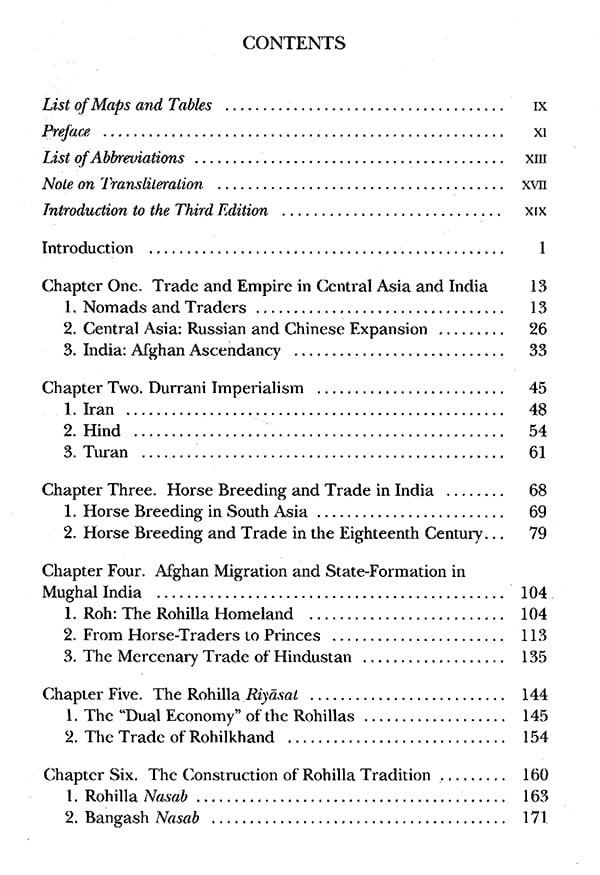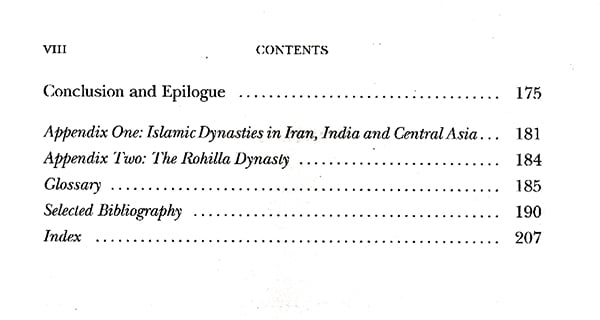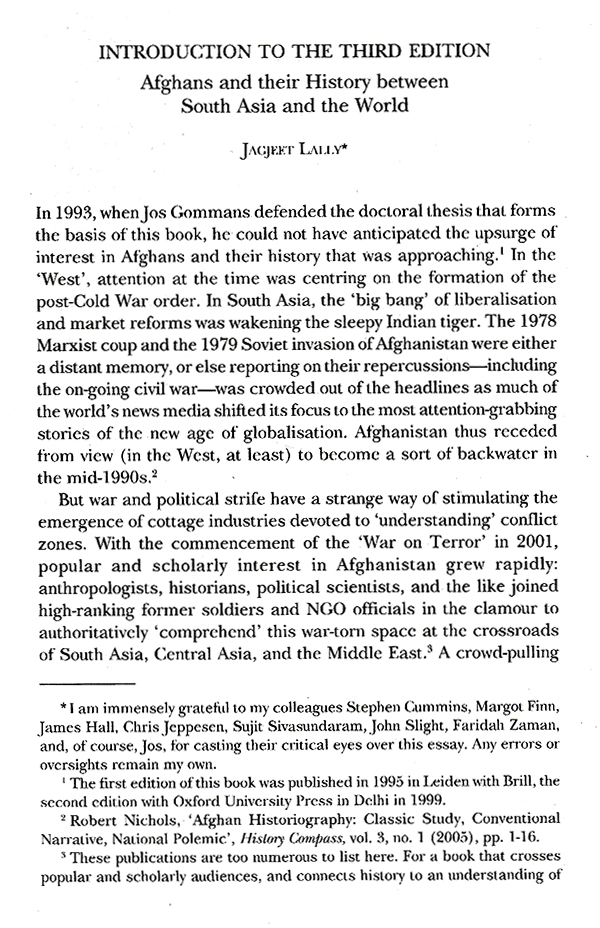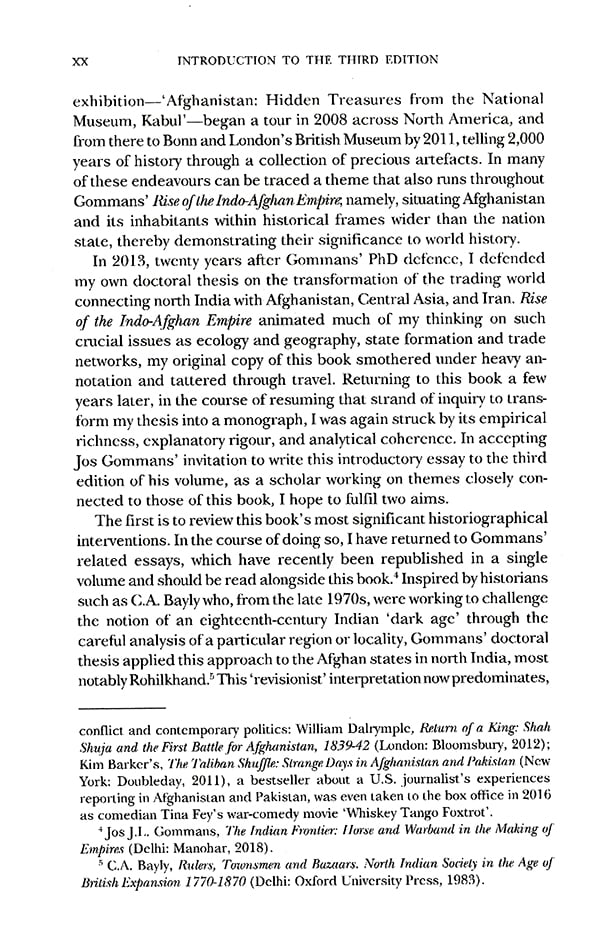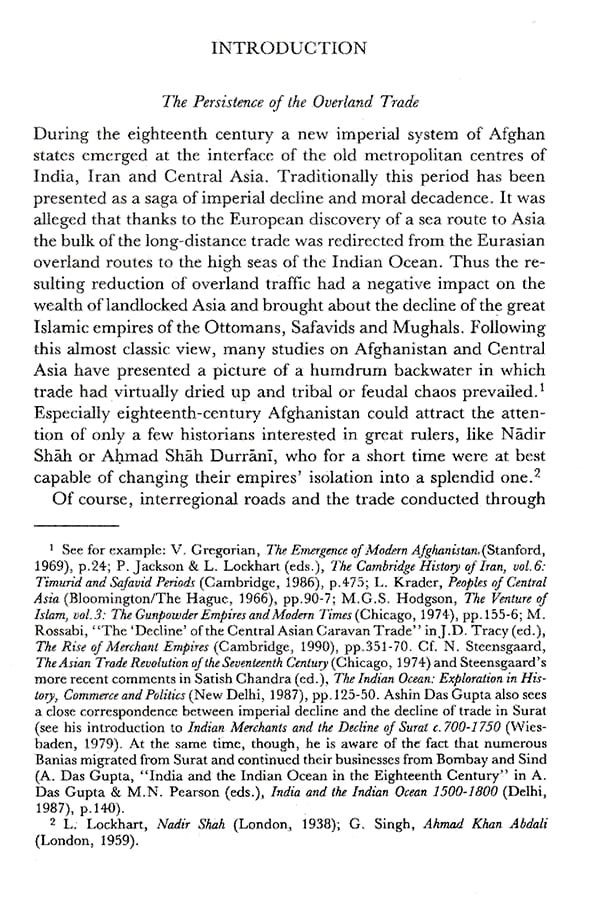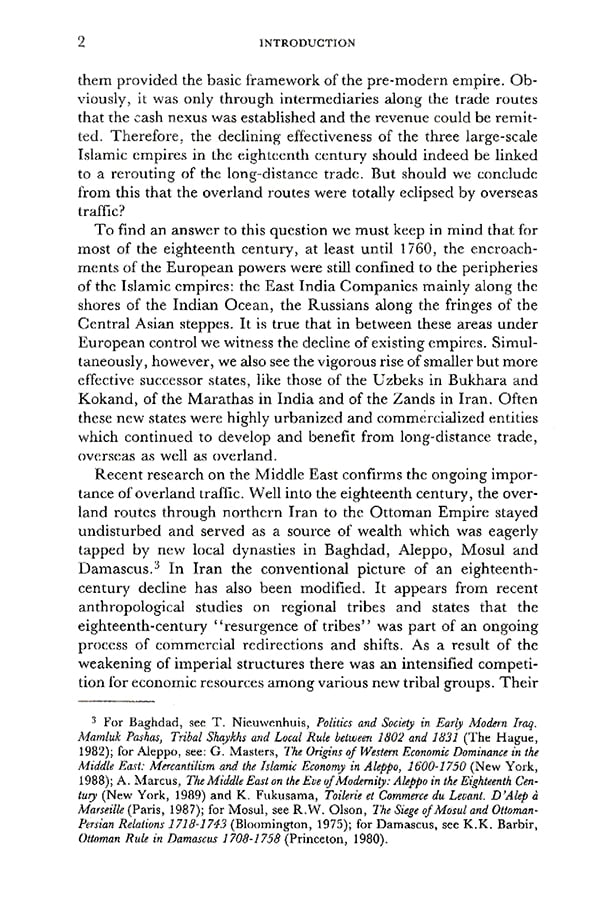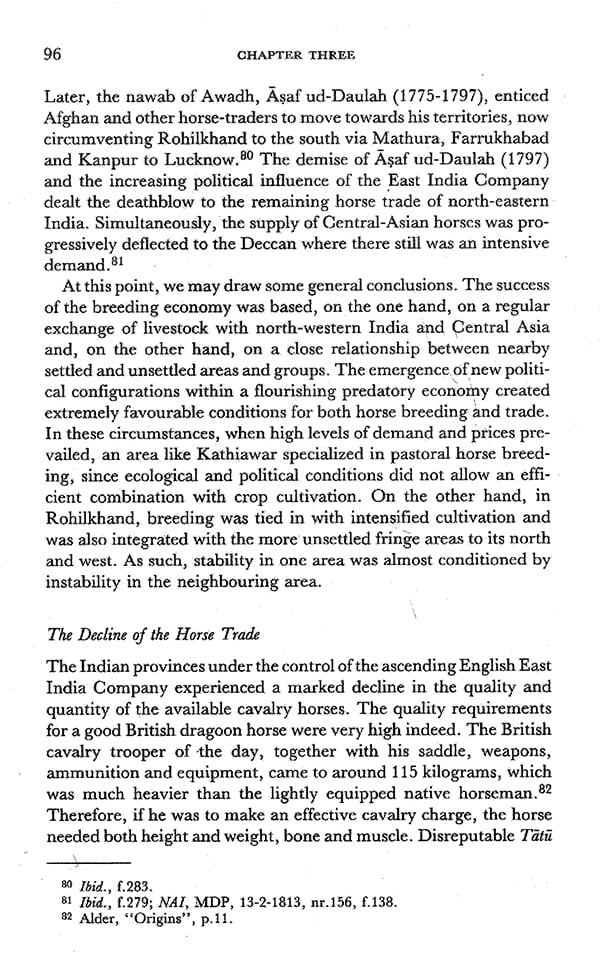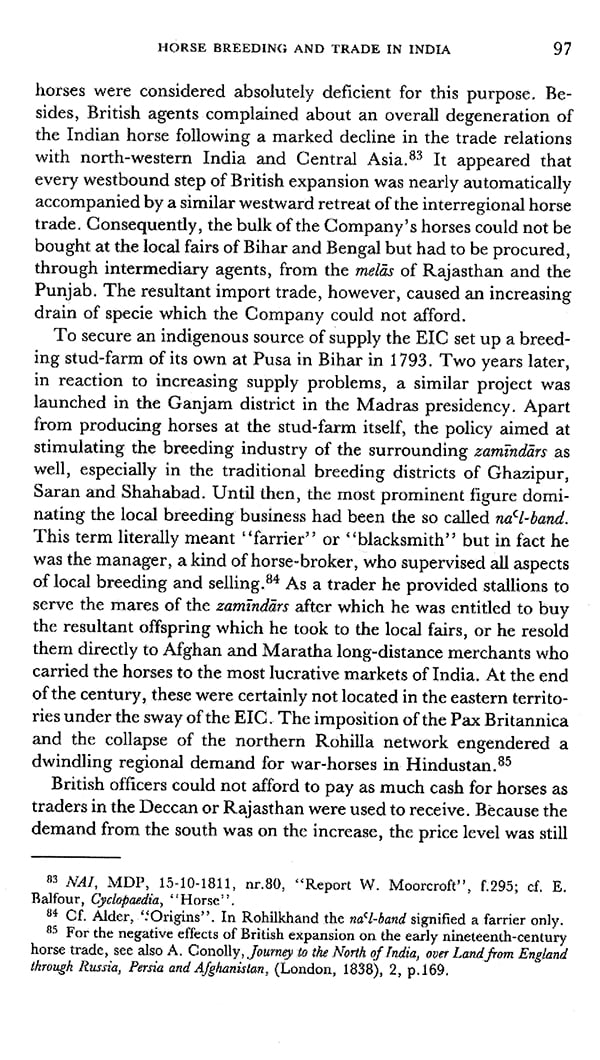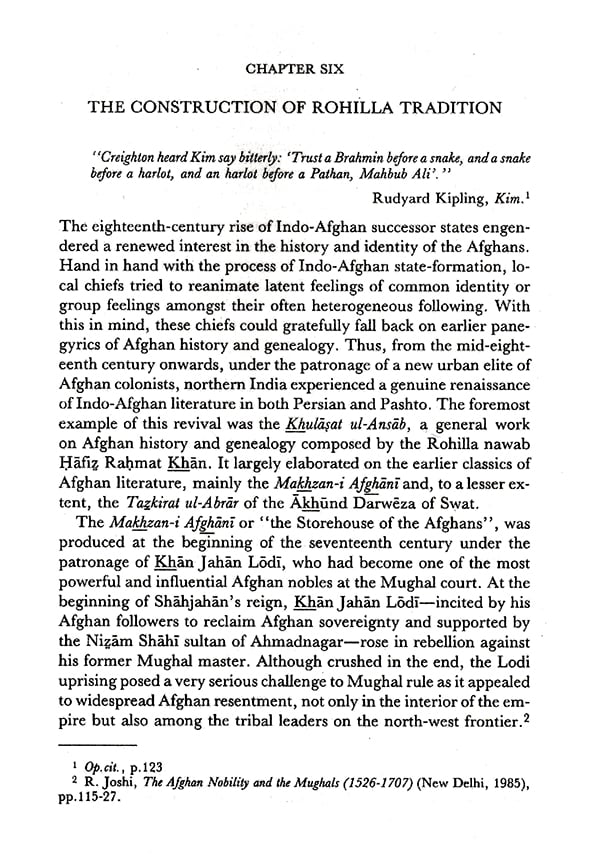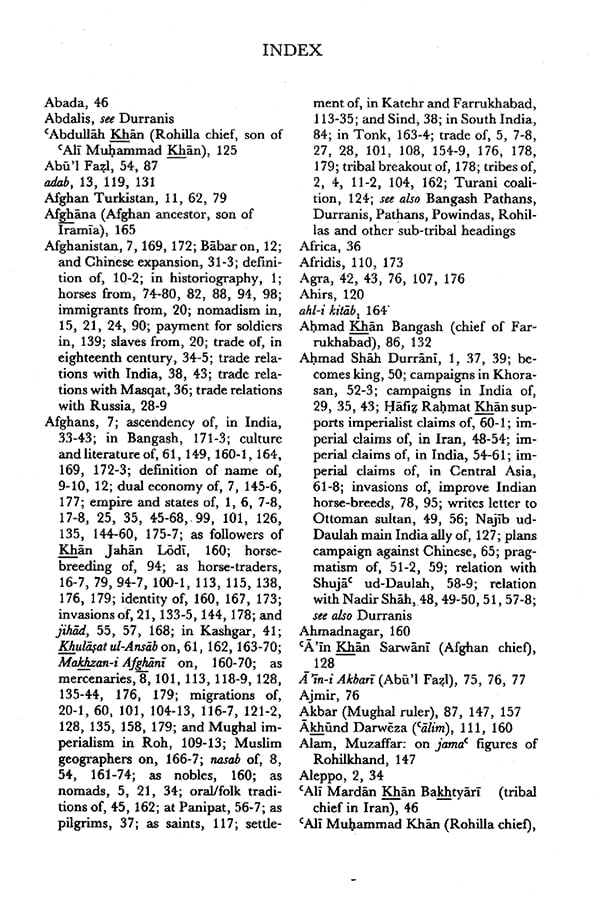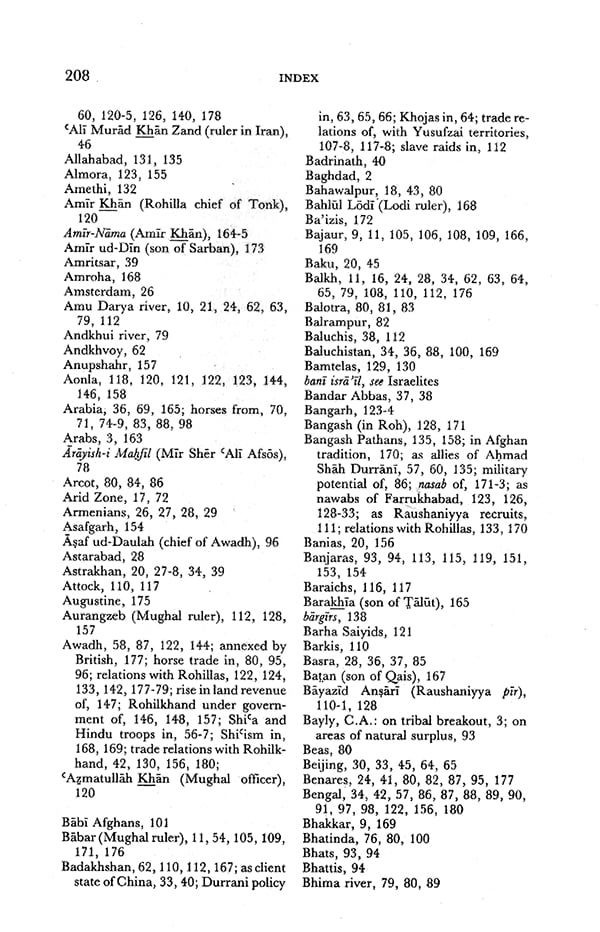
The Rise of the Indo-Afghan Empire c. 1710- 1780
Book Specification
| Item Code: | NAZ127 |
| Author: | Jos J.L. Gommans |
| Publisher: | Manohar Publishers and Distributors |
| Language: | English |
| Edition: | 2019 |
| ISBN: | 9789350981733 |
| Pages: | 282 (11 B/W Illustrations) |
| Cover: | HARDCOVER |
| Other Details | 9.80 X 6.30 inch |
| Weight | 640 gm |
Book Description
In The Rise of the lndo-Afghan Empire, Jos Gommans skilfully weaves together the histories of the environment, horse trade, military service, and migration to explain the final - but no less remarkable - instance of Afghan state-formation on the Indian subcontinent. The eighteenth century witnessed the emergence of two types of Indo-Afghan polities. The first was the rise of the Durrani Empire, founded by Ahmad Shah in 1747, which expanded into north India and Iran. The second were those states created in the mid-eighteenth century by free Afghan horse dealers and mercenaries, such as Rohilkhand and Farrukhabad. Their establishment was the culmination of long processes of migration and the accumulation of offices in return for loyal imperial service. Their success was bolstered by their connection with the Durrani Empire and the trade in warhorses and goods across the Indo-Afghan frontier. Gommans' now classic study with a new introduction by Jagjeet Lally bridges the worlds of South and Central Asia, nomadic and sedentary society, to bring to life Afghans' contributions to the cultural dynamism and economic buoyancy now firmly associated with pre-colonial South Asia.
Jos J.L. Gommans is Professor of Colonial and Global History at Leiden University. He has published two other monographs, eight edited volumes and two atlases on the early modern history of South Asia and the Indian Ocean. He is currently moving in the direction of Intellectual Global History. Together with the present volume, Manohar is bringing out a collection of his selected essays as The Indian Frontier: Horse and Warband in the Making of Empires.
Jagjeet Lally is Lecturer in the History of Early Modern and Modern India at University College, London. His current project focusses on trade, economy, and society across north India, Afghanistan, and Central Asia, and will be published as a monograph, India and the Silk Roads: The History of a Trading World, c. 1700-1900. His next project is a global history of the Himalayas.
Writing this book has been a most enjoyable and stimulating experience. Partly this is due to the fascinating experience of imagining pre-modern Indo-Afghan history, partly it is the result of the kind support given by sponsors, colleagues and friends. First of all, I am much obliged to the Foundation for the Advancement of Tropical Research (WOTRO) for giving me for four years the necessary financial backing. This enabled me to stay for more than a year in London and for almost half a year in India. I am also indebted to the Reael Fund of the Leiden Institute for the History of Overseas Expansion for subsidizing my early spadework in the London archives. Equally indispensable was the help given by the staff of many libraries and archives: the British Library, the India Office Library and Records, and the library of the School of Oriental and African Studies in London; the University Library, and the Trinity College Library in Cambridge; the library of the Jawaharlal Nehru University, the National Archives, and the Nehru Memorial Library in New Delhi; the UP State Archives in Lucknow, the Raza Library in Rampur, and the Maulana Azad Library in Aligarh; the Staats-bibliothek Preussischen Kulturbesitz in Berlin; the Rijksarchief and the Koninklijke Bibliotheek at The Hague, as also the University Libraries of Utrecht and Leiden.
Along the way, many individuals encouraged my research by offering useful comments and suggestions. In particular I would like to thank Professors Peter Rietbergen, George Winius and C.A. Bayly, who, more than five years ago, put me on this track. Venturing beyond the conventional boundaries of history into the insecure realms of various disciplines, languages, religions and area specializations, I could not dispense with the help of specialists who provided me with their expertise: Dr Lutz Ilisch on Durrani coins, Professor Van der Meij on horse-management, Professor J.M.S. Baljon on Shah Wall:11115h, Professor PJ . Marshall and. Anand Yang on the EIC records and Hakim Muhammad Hasim. Khan on the Rampur Nawabs, For their general encouragement Dr Leonard Blusse' and Professors R.E, Frykenberg and M. Rossabi proved indispensable. I also appreciated the frank criticism of Professor Anatoly Khazanov. Stimulating were the animated discussions with Professors Dirk Kolff, K.N. Chaudhuri and Muzaffar Alam. The latter also provided me with his kind hospitality and friendly care during my stay in India. I am especially indebted to one of his students, Arnarjit Singh, who familiarized me with New Delhi and helped me to overcome my initial culture shock. I am grateful to other friends who generously opened their homes to me, in particular Frits van Kempen in London and Dr Zahir Ali Siddiqui in Rai I reserve special mention for my friends Hank Kune, Dr Nico den Tuinder and Ticia Rueb for their valuable criticism on earlier drafts. Of great help was the assistance in typewriting by Betty Mitchell.
This study is a slightly revised version of my PhD thesis written at the Kern Institute of Leiden University. If it may be a proof of a certain craftsmanship than most of the credit should be reserved for my patient gurus Professor Jan Heesterman at Leiden and Professor Andre Wink at Madison-Wisconsin. It was both a stimulating pleasure and a privilege to experience for more than five years their scholarly guidance and baraka. Needless to say that any short-comings of the present work are entirely my own responsibility. Much remains to be done.
The final credit should go to my wife Marianne. On many re-search trips she travelled with me, helped me to take stock of the European sources, read and criticised draft versions, did some of the type-work and, on top of all this, always remained a loving companion.
**Contents and Sample Pages**